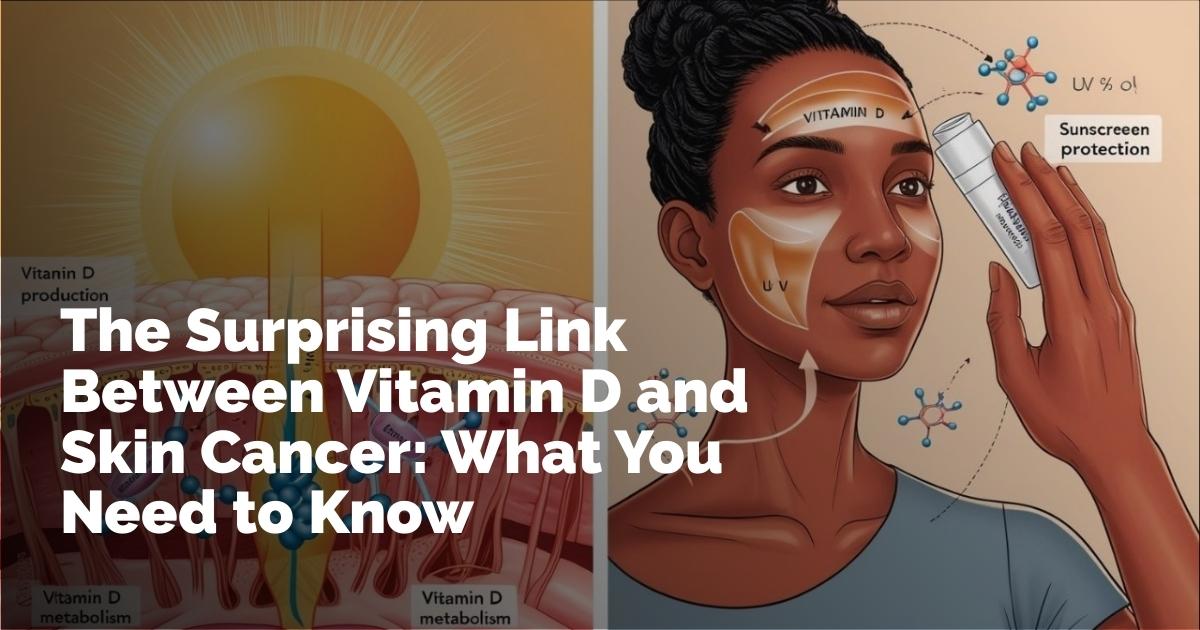Slathering on sunscreen? You might be blocking more than just a tan. Discover aspects often overlooked in the sunscreen and vitamin D conversation.
The Intricate Relationship Between Vitamin D and Skin Cancer
When considering sunscreen use and vitamin D synthesis, it is crucial to recognize the complex interplay between sun exposure and skin health. Vitamin D, mostly generated in the skin following UVB exposure, has been linked to numerous health benefits, including reduced risk and improved prognosis for certain cancers.
While it is well known that vitamin D deficiency correlates with higher cancer mortality rates, the connection to skin cancer, such as melanoma, requires a nuanced understanding. Structural insight into vitamin D metabolism reveals its potential role in decreasing skin cancer risks. It catalyzes apoptosis (programmed cell death) in malignant cells, inhibits angiogenesis (the formation of new blood vessels essential for tumor survival), and encourages cell differentiation, leading to more normal cell growth.
Experimental studies suggest that vitamin D metabolites might contribute significantly to skin cancer prevention and offer benefits post-cancer diagnosis by possibly decelerating tumor growth and enhancing treatment efficiency. However, human data remains inconclusive, emphasizing the importance of balanced sun exposure to harness the protective benefits of Vitamin D without exacerbating risks associated with UV exposure.
Vitamin D Synthesis and the Cancer Connection
Scientific studies underscore the protective benefits of vitamin D against several types of cancer. By regulating cell growth and facilitating cellular differentiation, adequate vitamin D levels may mitigate the development of cancers like colorectal and breast cancer. Notably, studies have shown that vitamin D supplementation correlates with lower mortality in advanced cancer cases.
However, the story is different and less straightforward regarding skin cancer. While some data suggest higher vitamin D levels might be associated with a rise in melanoma incidents, this does not necessarily suggest a direct cause-effect relationship. Instead, it magnifies the importance of optimal sun exposure to maintain sufficient vitamin D levels without heightening skin damage risk, which could lead to carcinogenesis.
The Indispensable Role of Sunscreen
Sunscreen remains an essential component in fighting against UV-induced skin damage. Regular and proper use of broad-spectrum sunscreen significantly reduces the risk of both melanoma and non-melanoma skin cancers. The American Academy of Dermatology unequivocally advocates for using sunscreen with an SPF of at least 30, applied liberally and reapplied every two hours whenever outdoors.
While sunscreens can inhibit Vitamin D synthesis by forming a protective skin barrier against UV rays, they don't wholly obstruct the process. People can still maintain sufficient vitamin D levels through unplanned sun exposure encountered during day-to-day activities even when using sunscreen, provided it's applied correctly. Moreover, including dietary sources of vitamin D—such as fatty fish, vitamin D-fortified foods, and supplements—supports maintaining an adequate level comfortably.
Navigating Between Sun Protection and Vitamin D Sufficiency
Striking a balance between adequate sun exposure for Vitamin D and safeguarding the skin from harmful UV radiation remains crucial. A recent meta-analysis revealed that vitamin D deficiency does not directly increase melanoma risk; however, lower vitamin D levels may be linked to more aggressive tumor behaviors and poorer outcomes at diagnosis.
Ultimately, ensuring optimal health outcomes revolves around a strategic combination of sun safety measures—proper sunscreen use and time management of sun exposure—and dietary strategies ensuring that vitamin D requirements are met without increased reliance on sun exposure alone. Adopting this balanced approach provides an effective pathway to maintain healthful Vitamin D levels while reducing the risks related to excessive UV exposure, ensuring comprehensive skin care and broader health prudence.
출처 : Original Source

